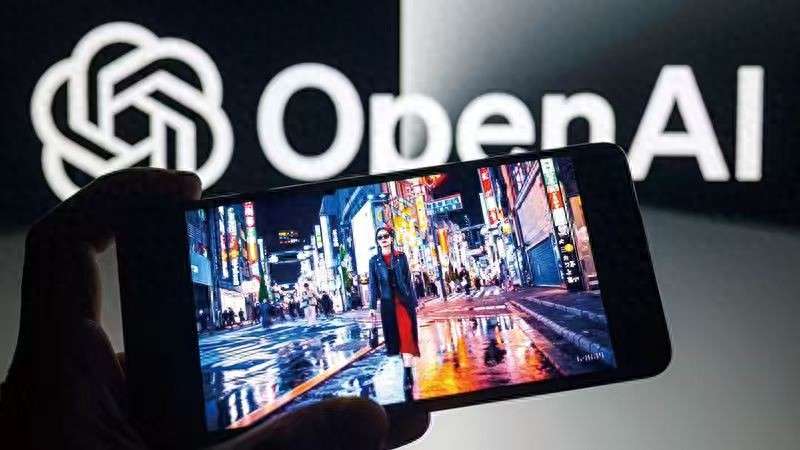OpenAI's Strategic Response to DeepSeek
Advertisements
The digital realm is currently witnessing a seismic shift, with the rise of DeepSeek making headlines across the globe. Recent discussions have put OpenAI's CEO, Sam Altman, in the spotlight as he contends with inquiries related to the burgeoning competition posed by DeepSeek. Altman’s remarks have oscillated between acknowledging the impressive advancements made by DeepSeek and expressing unwavering confidence in OpenAI's own research trajectory and product strategies. This back-and-forth has coincided with a critical update to OpenAI's product roadmap, suggesting a dynamic landscape in artificial intelligence development.
On February 13th, 2024, Altman took to social media, revealing significant updates regarding the release timeline for the forthcoming GPT-4.5 and GPT-5 models. The upcoming model, codenamed Orion, will mark OpenAI's final venture into the realm of non-chain-thought models. Following this release, the company is set to integrate the next generation GPT-5 into its ChatGPT and API offerings. Notably, GPT-5 will amalgamate various existing technologies within the company, including innovations from the o3 model, which will no longer be launched as a standalone entity as initially planned.
Altman articulated the organization's most pressing priority: simplifying and unifying the capabilities within the o-series and GPT-series models. He underscored the necessity of creating a cohesive AI system that adeptly utilizes all available tools, able to discern when to employ long-chain thought processes while executing a broad array of general tasks. This shift not only indicates a response to industry trends but also speaks to the broader aspirations of improving the practical utility of AI technologies.
The emergence of DeepSeek’s R1 model at the end of January, which it claimed could rival OpenAI's o1 model—considered the company's pinnacle of reasoning capabilities until then—has intensified the competitive pressure faced by OpenAI. Following the launch of R1, OpenAI proceeded with its scheduled unveiling of the mini version of o3 on January 31st. According to OpenAI, the mini o3 model exhibited superior skills in software engineering, coding, and mastery of doctoral-level scientific knowledge compared to o1 and scored better across numerous benchmark tests. While the anticipation for the full o3 model was palpable, it became clear that the competitive landscape was evolving rapidly.

However, the release of o3-mini did not alleviate the burgeoning anxiety surrounding market rivalry. On the day of its release, OpenAI hosted a Q&A session online, where Altman openly acknowledged the impressive design of DeepSeek's R1 model. He asserted that while OpenAI would be releasing even better models in the future, their market dominance was not as firm as it had been in previous years. Amid the growing scrutiny around OpenAI's decision to adopt a closed-source model, Altman indicated that he believed this strategy to stand on the “wrong side of history,” highlighting a need for a different open-source approach.
As the narrative of AI innovation unfolds, OpenAI must act quickly to reaffirm its position as a leader in the realm of large models. The rapid introduction of GPT-5 might serve as an effective strategy to regain momentum, especially given the lengthy gestation period since the launch of ChatGPT in November 2022 and GPT-4 in March 2023. It has been almost two years since GPT-4 entered the market, raising questions about the pace of OpenAI's product releases.
Valuable insights from industry experts suggest a growing consensus on the competitive pressures that OpenAI is currently facing. Yann Lecun, Meta's Chief AI Scientist, remarked on DeepSeek's R1, stating that open-source large models are beginning to surpass their closed-source counterparts. He posits that DeepSeek stands to benefit from the trends in open research and open-source technologies, drawing parallels to the success seen with Meta’s PyTorch and Llama initiatives. Additionally, Jim Fan, a senior research scientist at Nvidia, underscored the notion that a non-American company is ensuring that OpenAI's foundational mission—to enable cutting-edge research that is openly accessible to all—is maintained.
Keen observers within the AI industry have pointed out that closed-source models, like those from OpenAI, are facing mounting pressure from their open-source alternatives. If closed-source offerings fail to clearly outperform open-source models, it could hamper their profitability, particularly since users can simply download and deploy open-source options on their own infrastructures. The introduction of DeepSeek's latest model has certainly heightened competition in the large model sector, intensifying the imperative for innovation and differentiation among existing players.
In light of these competitive dynamics, OpenAI has responded by easing its pricing strategy. Earlier, OpenAI had emphasized that free users of ChatGPT would gain access to the o3-mini model, marking a significant milestone as it became the first time a reasoning model was offered to free users. Altman has since extended this access, announcing that free ChatGPT users would also enjoy unlimited conversational interactions with GPT-5 under standard intelligence settings, albeit with moderate abuse thresholds in place. Conversely, those who subscribe to ChatGPT will have the advantage of utilizing GPT-5 at higher intelligence levels.
As the competition intensifies, the ability for AI companies to adapt their strategies while maintaining relevance becomes paramount. The interplay between open-source and closed-source models is not simply a technical discussion but rather a reflection of broader philosophical stances within the AI community regarding access, transparency, and innovation. Companies like OpenAI must navigate this evolving landscape with caution, continuously reassessing their products and strategies to ensure they remain at the forefront of AI development. As we move forward, the dialogue surrounding these advancements will likely shape not just the future of artificial intelligence but also our understanding of access to technology, intellectual property, and the democratization of knowledge in an increasingly digital world.
Leave a Reply